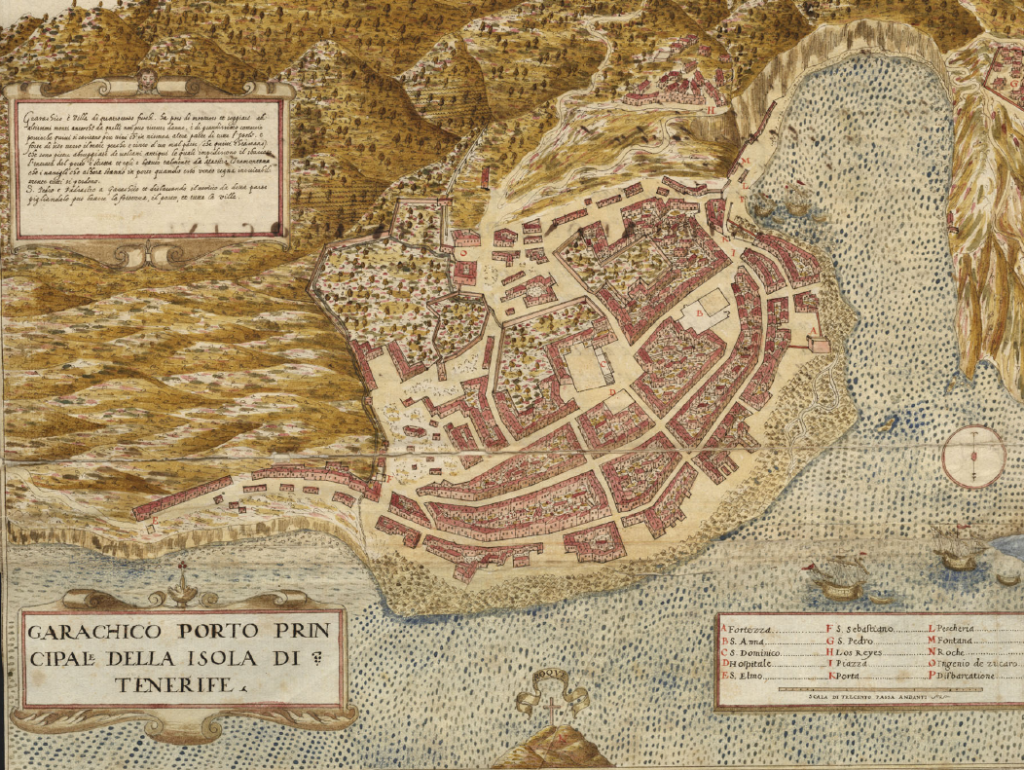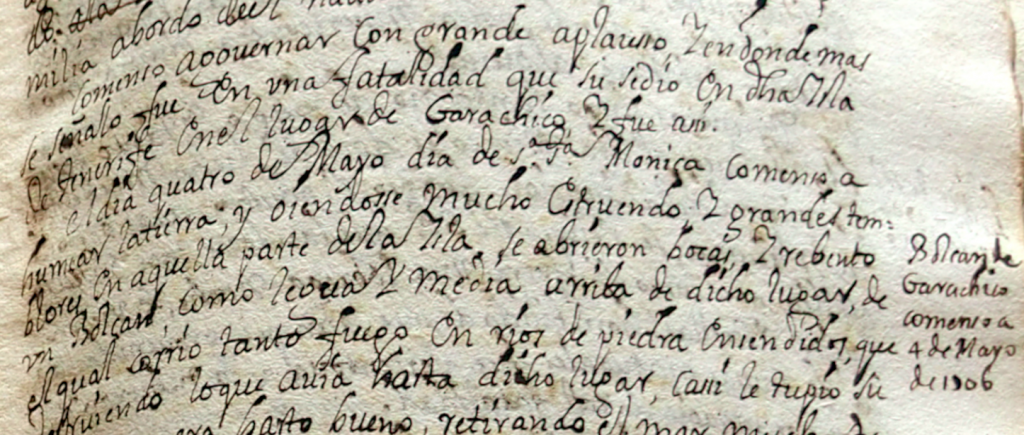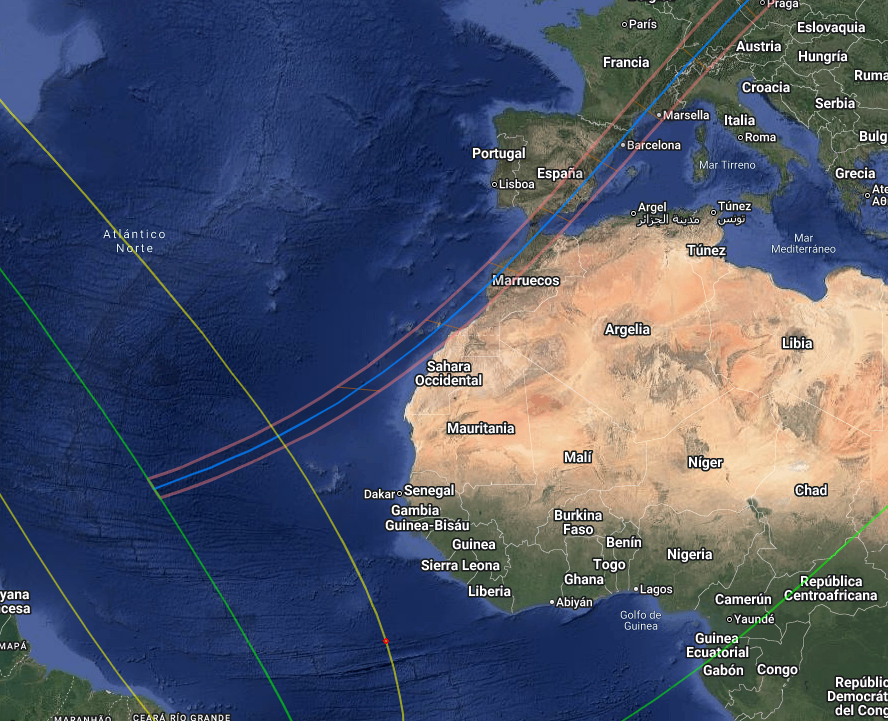
Map of the town of Garachico (Tenerife) circa 1590, drawn by the Cremonese engineer Leonardo Torriani (source: Biblioteca Geral da Universidade de Coimbra, catalogue number Ms. 314, f. 77v)
Topography of the Fortunate Isle of Gran Canaria, by the Franciscan friar, chronicler and historian Br. José de Sosa (1646-p. 1730) was written at least twice.
The first time was in a manuscript signed by its author, now preserved at Real Sociedad Cosmológica of La Palma, which has seen two printed editions, in 1849 and 1994, respectively, and a reissue of the first (1943).
The second time, in another volume, also autographed, and bought from a private individual in 2021 by Cabildo de Gran Canaria; this volume became part of the collection of the library and archive of Casa de Colón with catalogue number COL MAN 1.
While the cover of the original work dates it to 1678, nevertheless spanning events up to the end of the following decade, this second and unpublished volume covers events up to at least 1730. It is therefore a work that Father Sosa spent more than half a century writing, a process that was undoubtedly interrupted by his death, which we cannot date precisely as there are no documents to attest to it, but which in all likelihood must have come when he was in his eighties.
A few months ago, given the undoubted appeal of the text, we decided to undertake the complete transcription of the manuscript —as we said, still unpublished— which we have now almost completed. As a preview, we offer here a couple of paragraphs from chapter XXXV (I) of book II [f. 167 (I)][1]Both the pagination of the manuscript and the numbering of the chapters contain some duplications, which we have resolved by using Roman numerals in brackets., devoted to listing the captain generals appointed by the Crown of Castile to govern the Canary Islands, where Sosa briefly describes, in an unpublished passage, the volcanic eruption that devastated the town of Garachico in Tenerife in 1706, and the solar eclipse that occurred a week later[2]This translation by PROYECTO TARHA:

Excerpt from folio 167r (I) of manuscript COL MAN 1, preserved in the library and archive of Casa de Colón (Las Palmas de Gran Canaria), in which Br. José de Sosa recounts the eruption of Garachico in 1706.
He began to govern [Captain General don Agustín de Robles] with great acclaim, and where he most distinguished himself was in a tragedy that occurred on the island of Tenerife in the town of Garachico, and it was thus.
On the fourth of May, the feast day of Saint Monica, the earth began to smoke; and being great noises and violent tremors in that part of the island, chasms opened up, and a volcano erupted about a league and a half above that place, from which so much fire flowed in rivers of blazing stone that while destroying everything up to that place, it blocked its port, which was a very good one, causing the sea to recede a long way, ruining and burning most of the churches, convents, and houses of some lords. It burned the parish church, which was a fine temple, located near the port, and destroyed and burned the convent of our father Saint Francis, a large convent in the province. and it burned up the convent of the Poor Clares, devoted to Saint Diego de Alcalá. It destroyed the town and parish of El Tanque; it blocked and burned many vineyards and estates, the major estates of some lords. In which predicament and confusion, the said captain general showed great courage, leadership, and charity, courage in encouraging the residents of that place and others who gathered there, and brought in from other parts, to leave the danger and take the most precious of their jewellery and valuables from their homes; he governed in arranging where they could be safe from theft, which occurs on such occasions : And charity in maintaining and sustaining many who emerged almost naked from the confusion of such a fierce Mongibel; from which, by divine mercy, no creature was endangered.
While this river of fire and Vesubius of lights lasted, on Wednesday the twelfth of May, the eve of the Ascension of Christ our Lord, at eight o’clock in the morning, the sun was eclipsed, leaving the day so dark that, as if it were a gloomy night, stars could be seen shining. Such a horrible sight, which, although perhaps caused by natural phenomena, was portentous, and many took it as an omen of such a fatality.
Antonio M. López Alonso

